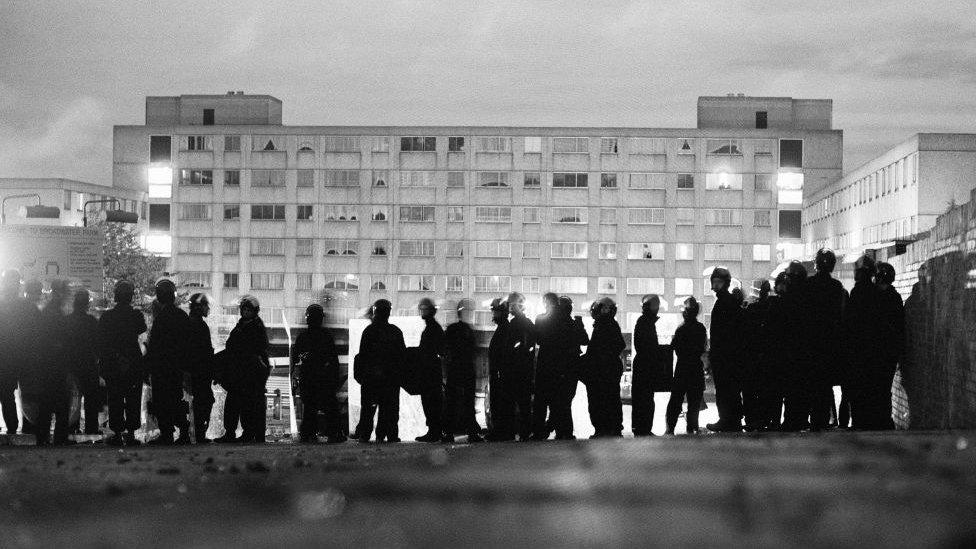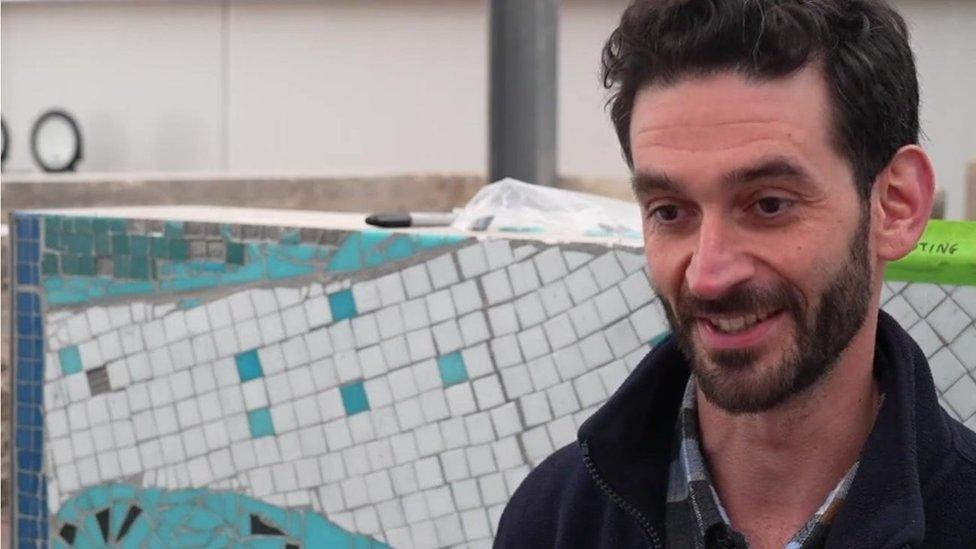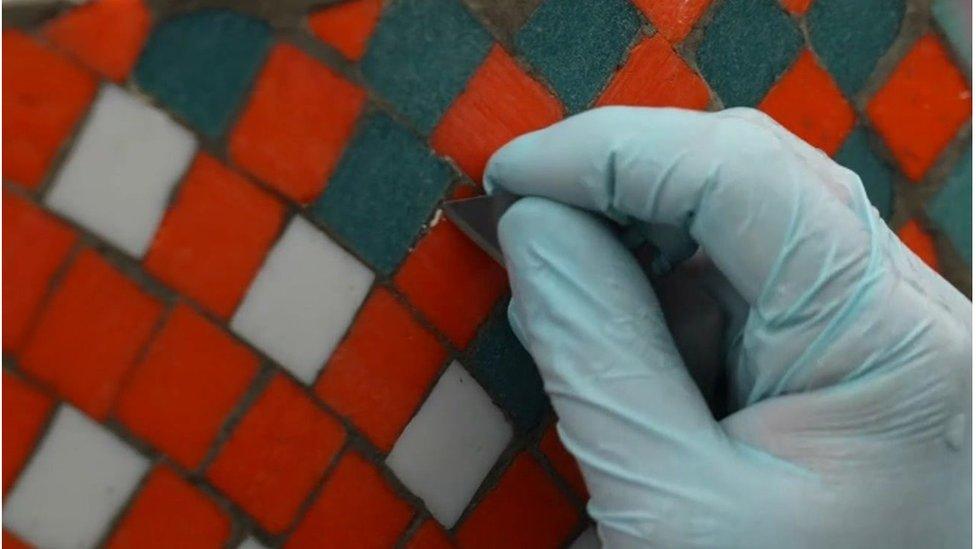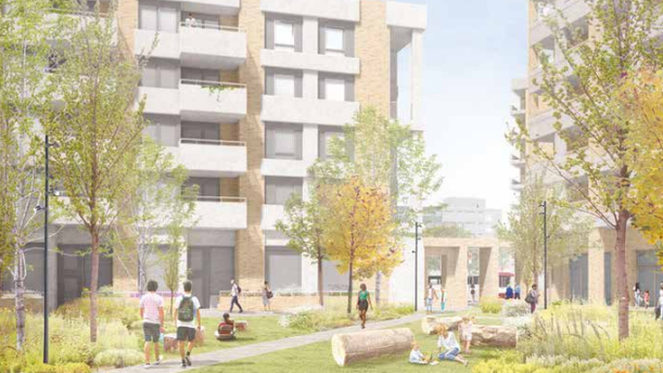Broadwater Farm mural Equality-Harmony restored and moved
- Published

The mural was created by one of the estate's residents, artist Gülsün Erbil
A mural created in the aftermath of the Broadwater Farm riot in north London has been removed ahead of its restoration and relocation.
The artwork, measuring 20m (65ft), was designed in 1986 by one of the estate's residents, artist Gülsün Erbil.
Called Equality-Harmony, it is Grade II listed by Historic England and is therefore protected by law.
The glass and concrete piece will be cleaned in an on-site workshop before being put in a new place.

What was the Broadwater Farm riot?
Broadwater Farm estate was the flagship housing project of the new London Borough of Haringey, created under London's local government reorganisation of 1965.
On 6 October 1985 Broadwater Farm made national headlines as the scene of a riot.
Tensions between the black community and the police were ignited by the death of Cynthia Jarrett the previous day during a police search at her home. In the ensuing disturbance on the estate PC Keith Blakelock was killed.

Riots broke out in the Broadwater Farm estate the day after resident Cynthia Jarrett died during a disturbance while police searched her home
Over the following months tensions remained high as police maintained a presence at the estate and a series of contested criminal trials proceeded at the Old Bailey.
An independent inquiry identified racism as "a running theme throughout", and that "discriminatory attitudes and policies have affected policing, education, employment prospects, housing allocation and media reporting".
In October 1986, Haringey Council began a programme of investments in the estate to address what had been identified as underlying factors behind the riot. They included commissioning two external community murals and two landscaped gardens.


Lead conservator Paolo Volpi said a particular challenge was sourcing tiles to match the original
The mosaic, described by Historic England as "an important piece of London's contemporary social history", had to be removed from the side of one of the tower blocks which is being demolished after structural problems were found.
A team of conservators is in the process of delicately cleaning the mosaic with deionised water and conservation-grade detergent.
The project's lead conservator, Paolo Volpi, said a particular challenge was sourcing tiles to match the original colours, to replace any broken or missing ones.
It required finding a specific shade of blue that was much more popular at the time than now, he explained.

The artwork is being restored in an on-site workshop
Towards the top of the composition are a series of images which place the artwork in its geographical location.
Twin hemispheres depict the western and eastern worlds. The UK is outlined in green on a swirling blue background, London is next to be depicted, bisected by the distinctive blue line of the Thames and with the location of Broadwater Farm indicated by a circle.
Beneath that are the buildings of the estate, including Tangmere House (with the mural shown in miniature), the distinctive curved boiler house and the red triangular structure and swings of the children's play centre. Views of the estate continue on the right-hand side.
The lower half of the panel depicts the residents' recreations and amenities, including snooker, chess, books, a computer, breakdancers, kettle drums and a track runner.
Other imagery includes a black figure holding up a dove of peace, the moon piercing the sun and further mystical spirals.
At the base of the mural is a black and a white hand playing the black and white keys of a piano, representing racial equality and harmony.

Deionised water and conservation grade detergent are used to clean the glass and concrete mural
Conservation company DBR used diamond cutting wheels to slice the mural into 21 sections, each weighing more than two tonnes.
Layers of gauze, wheat-starch paste, liquid rubber, and plaster were used to protect the mosaic surface from the vibrations.
The conservation work is expected to take about eight months.
Haringey Council has allocated £2m to fund the removal, repair and restoration of the mural.

Listen to the best of BBC Radio London on Sounds and follow BBC London on Facebook, external, X, external and Instagram, external. Send your story ideas to hello.bbclondon@bbc.co.uk, external
Related topics
- Published7 December 2022

- Published3 March 2014
